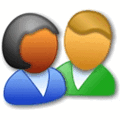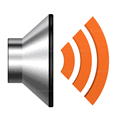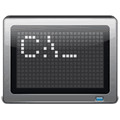How to Hide Your Screen and Block Distractions: 7 Best Tools for Focus and Privacy
If you’ve ever needed to hide your screen during a presentation or while working on sensitive content, you know how distracting it can be when your desktop displays unnecessary items.
Whether you’re trying to keep your presentation focused or just looking for a way to hide your screen from prying eyes, there are simple solutions to help.
In this guide, we’ll walk you through how to hide your screen effectively and how to block part of your screen to maintain focus and protect your privacy.
Hide your computer screen: best tools to use
HiddeX – Hide windows instantly with customizable hotkeys.
HiddeX is a lightweight, portable tool that lets you hide your screen or hide computer monitors at work with a single click or hotkey.
It’s perfect for when you need to quickly keep your display private—making your computer screen invisible to others while the programs continue running in the background.
With customizable hotkeys and the option to auto-hide specific apps, it’s a discreet way to protect sensitive information when you step away.
Pros:
- Lightweight and portable
- Customizable hotkeys
- Completely removes windows from desktop and taskbar
- Keeps applications running in the background
Cons:
- No option to blur windows
- Limited advanced window management features
Ready to secure your display? Download HiddeX now!
Quick Screen Privacy Blackout – Blank your screen instantly for on-demand privacy.
Quick Screen Privacy Blackout is a simple yet effective tool for instantly blanking your entire screen with one click or hotkey.
If you’re looking for an easy way to hide your screen—whether you’re presenting, working in a shared space, or need to make your computer screen invisible to others—this tool has you covered.
Customize the blackout color and toggle the effect on and off as needed for fast, reliable privacy.
Pros:
- Easy and quick to use
- Instant full-screen blackout
- Customizable blackout color
- Fast activation and deactivation
Cons:
- Lacks advanced window control
- Fewer customization options beyond the basic blackout
Need a fast solution to protect your display? Get Quick Screen Privacy Blackout here!
CinemaDrape –Block distractions with adjustable visible areas.
CinemaDrape helps you block part of your screen by darkening everything except a user-defined area, making it easier to focus on what matters.
Whether you’re presenting or working on a task, it lets you decide how to block part of your screen effectively.
You can resize and reposition the visible area—ideal for hiding screen details from side view—while enjoying multi-monitor support and customizable hotkeys.
Pros:
- Adjustable visible area
- Multi-monitor support
- Customizable hotkeys
- Effective distraction reduction
Cons:
- Can be tricky to align the visible area precisely
- Limited background effect options
Take control of your focus—download CinemaDrape here!
Le Dimmer
Dim everything except the active window for focus.
Le Dimmer is a straightforward tool that dims everything on your screen except for the active window. This is great if you want to subtly hide your screen distractions without completely obscuring your work. By adjusting the dimming intensity, you can easily create a more private workspace—ideal if you need to hide your computer screen at work while keeping your primary focus in view.
Pros:
- Adjustable dimming intensity
- Keeps focus on the active window
- Simple and unobtrusive interface
Cons:
- Doesn’t provide full-screen blanking
- Fewer advanced customization features
Looking for a subtle way to manage screen visibility? Download Le Dimmer now!
Invisiwind – Hide specific windows during presentations or meetings.
Invisiwind is ideal when you need to hide your screen while presenting or sharing your desktop.
It lets you selectively blur or hide specific windows so you can share only the necessary content while keeping sensitive data hidden—making your computer screen invisible to others.
With quick toggling of window visibility, Invisiwind helps maintain privacy during meetings and live streams.
Pros:
- Selectively hide or blur windows
- Great for presentations and screen sharing
- Easy to set up and toggle
Cons:
- Limited background customization
- Doesn’t offer full-screen blackout
Keep your sensitive information private—download Invisiwind now!
Zorro – Blank parts of your screen with flexible visibility.
Zorro is a powerful tool that lets you block part of your screen by blanking everything except for a user-selected rectangular area.
Whether you need to hide your screen while presenting or want to keep specific information visible, Zorro lets you snap the clear area to any open window.
It even offers a reverse mode to blank only a chosen section. With multi-monitor support and portable versions available, Zorro is perfect for keeping your computer monitors hidden from prying eyes.
Pros:
- Supports multiple monitors
- Customizable visible area and reverse mode
- Portable and flexible
- Effective for various presentation needs
Cons:
- Manual resizing may be required for precise fits
- No option to blur the non-visible areas
Looking for a versatile way to control your display? Download Zorro here!
TunnelVision – Focus on a specific area while hiding the rest.
TunnelVision takes a unique approach by darkening the screen except for a small, movable viewing area around your mouse pointer.
This makes it simple to focus on one section while effectively learning how to block part of your screen from others.
It’s perfect for situations where you need to hide your screen from side view or hide your computer screen at work. You can adjust the shape and size of the visible area and even set a custom background for added flexibility.
Pros:
- Portable and lightweight
- Customizable viewing area
- Simple and effective privacy solution
Cons:
- Limited background customization options
- Doesn’t support multi-monitor setups
Stay focused and protect your display—download TunnelVision now!
Conclusion
If you’re working on a project and need to concentrate on just the window with the text, or if you want to shut out everything else for a while, tools that allow you to make a selected area or window visible can be incredibly helpful.
With these solutions, you can easily hide your desktop icons temporarily and only view a specific part of the desktop, ensuring that distractions are minimized and your attention remains exactly where it should be.



Is there anything like this for macs?
Excellent, thanks !
this can be useful someday!!! i always thank you raymond! :D
I’ve had zorro for at least 3 or more years, though I never really had to use it since many players and video files have options that don’t necessitate it.
Nice funny tool!!
Looks cool, might be worth a download for those of us that have ADHD ;)
another nice tool from raymond thanks ray :)
Good post.. Thanks Ray.
Could be very useful (or as a very mean joke xD)
Thanks for info Raymond
Thanks for the tips Raymond!
Excellent post. Great for censoring Desktop. Thanks :)
Thanks Ray.